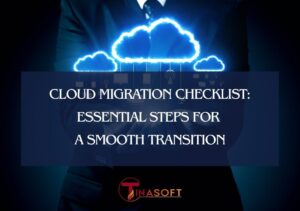In today’s rapidly evolving technological landscape, cloud migration has become a crucial strategy for businesses aiming to enhance their operational efficiency, scalability, and innovation. By transitioning their IT infrastructure and applications to the cloud, organizations can unlock numerous benefits, including cost savings, improved performance, and enhanced security. This article explores the critical aspects of cloud migration, highlighting its importance and providing insights into the process.
Understanding Cloud Migration
Cloud migration involves moving an organization’s data, applications, and workloads from on-premises or legacy infrastructure to cloud environments. This process can take various forms, including rehosting, refactoring, and rearchitecting, depending on the specific needs and goals of the business. Successful cloud migration requires careful planning, execution, and ongoing management to ensure that the transition delivers the desired outcomes.

Key Benefits of Cloud Migration
Cost efficiency
One of the most significant advantages of cloud migration is cost efficiency. Cloud services typically operate on a pay-as-you-go model, allowing businesses to pay only for the resources they use. This eliminates the need for significant upfront investments in hardware and software and reduces ongoing maintenance costs. Additionally, cloud providers offer economies of scale that can lead to lower overall costs compared to traditional on-premises solutions.
Scalability and Flexibility
Cloud environments provide unparalleled scalability, enabling organizations to quickly adjust their resources based on demand. This flexibility is particularly beneficial for businesses with fluctuating workloads or those experiencing rapid growth. By leveraging cloud services, companies can scale their IT infrastructure up or down as needed without the constraints of physical hardware limitations.
Enhanced Performance and Reliability
Cloud providers invest heavily in state-of-the-art infrastructure and technologies, ensuring high performance and reliability. With global data centers and redundant systems, cloud services offer superior uptime and availability compared to traditional on-premises solutions. This reliability is critical for businesses that rely on their IT systems for day-to-day operations and customer interactions.
Improved Security
Security is a top priority for cloud providers, who implement robust measures to protect their customers’ data and applications. These measures include advanced encryption, multi-factor authentication, and regular security audits. By migrating to the cloud, businesses can benefit from these enhanced security protocols and reduce their risk of data breaches and cyberattacks.
Innovation and Agility
Cloud migration enables organizations to leverage cutting-edge technologies and services that drive innovation and agility. Cloud platforms offer a wide range of tools and services, such as artificial intelligence, machine learning, and big data analytics, that can help businesses gain a competitive edge. Additionally, cloud environments support agile development methodologies, allowing teams to collaborate more effectively and bring new products and services to market faster.

The Cloud Migration Process
- 1. Assessment and Planning The first step in any cloud migration journey is a thorough assessment of the organization’s current IT infrastructure, applications, and workloads. This assessment helps identify the most suitable cloud migration strategy and develop a detailed migration plan. Key considerations include evaluating the compatibility of existing applications with cloud environments, estimating costs, and defining success metrics.
- 2. Selecting a Cloud Provider Choosing the right cloud provider is critical to the success of the migration. Businesses should consider factors such as the provider’s reliability, security measures, scalability options, and support services. Popular cloud providers include Amazon Web Services (AWS), Microsoft Azure, and Google Cloud Platform (GCP), each offering a unique set of features and capabilities.
- 3. Executing the Migration The migration execution phase involves transferring data, applications, and workloads to the chosen cloud environment. This process can be complex and may require a combination of rehosting, refactoring, and rearchitecting, depending on the specific requirements. It is essential to follow best practices and utilize migration tools and services provided by the cloud provider to ensure a smooth transition.
- 4. Testing and Optimization Once the migration is complete, thorough testing is necessary to ensure that all systems and applications are functioning correctly in the new cloud environment. This testing phase helps identify and address any issues or performance bottlenecks. Additionally, ongoing optimization and monitoring are essential to maximize the benefits of cloud migration and ensure long-term success.

Conclusion
Cloud migration is a powerful strategy that offers numerous benefits for businesses looking to enhance their operational efficiency, scalability, and innovation. By carefully planning and executing a cloud migration strategy, organizations can achieve significant cost savings, improved performance, enhanced security, and greater agility. In today’s competitive business landscape, embracing cloud migration is essential for staying ahead and driving long-term success.













